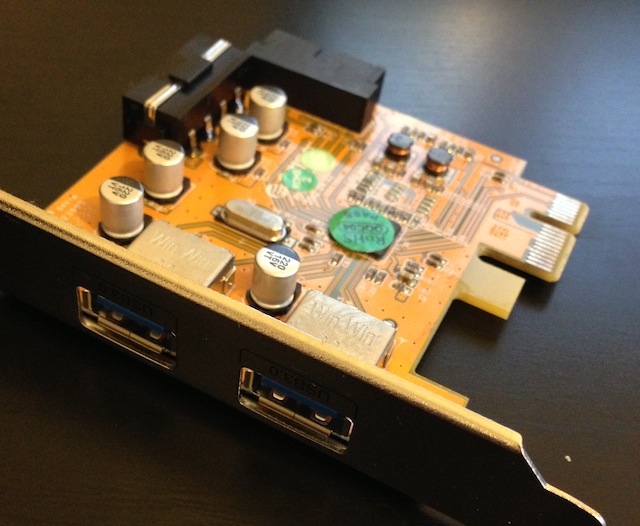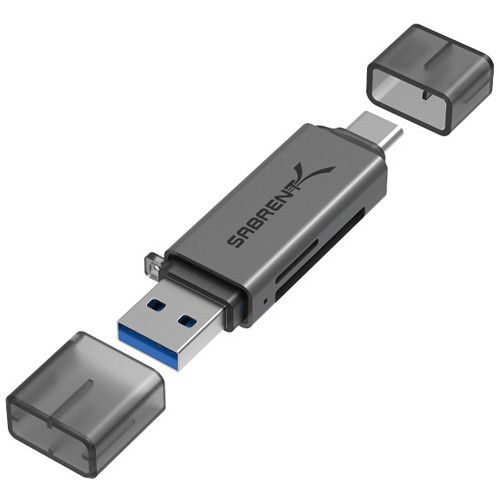
- #USB CARDS FOR MAC INSTALL#
- #USB CARDS FOR MAC PRO#
- #USB CARDS FOR MAC MAC#
- #USB CARDS FOR MAC WINDOWS#
I haven’t tested the USB-A performance, but that is rated at “up to 5 Gb/s”, and I have little to doubt that it’ll achieve that. Put it this way – I’ll be using the Satechi to transfer the many gigabytes of video footage I work with each week. When plugged directly into the Satechi’s SD card reader, that transfer time increased by just three seconds. Transferring a 13GB video file via my trusty Sandisk SD Card reader took 2 minutes, 26 seconds. It was a similar story with the SD card reader.
#USB CARDS FOR MAC PRO#
I connected my 1TB Sandisk Extreme Pro external SSD drive to the Satechi’s USB-C port and happily edited 4K video with zero issues. In real-world testing, this didn’t appear to matter.
#USB CARDS FOR MAC MAC#
Satechi’s USB-C data port is rated at 5Gb/s – considerably less than the 40Gb/s port to which it connects on the back of the Mac mini. Add to that the SD cards and a more accessible headphone jack, and it’s pretty well connected for the price. So, the Satechi stand and hub simply extends one of the USB-C ports and provides, arguably, more USB-A ports than most people will need. Just note that, for some bizarre reason, you have to insert the SD card upside down (it’s worryingly easy to insert it the wrong way, as I did at first). With the Satechi, I have an SD card slot immediately available. This is a task I undertake several times a day, and it never fails to be annoying. Before the Satechi, I’d have to awkwardly feed my SD cards towards the back of the Mac mini and into a Sandisk SD card reader hanging inelegantly from the rear end of the machine. However, for me, it’s that SD card that makes the hub a valuable addition to my desk. Therefore, if you’re looking for more USB-C connections without a dongle… you’ll still have to buy a dongle. This is important to note – the Satechi hub doesn’t offer any more USB-C connectivity it simply extends one of the exiting ports to the front of the machine. There’s a headphone jack, too.Īs far as data transfer is concerned, this equips your Mac mini with a total of five USB-A ports, two SD card readers and, yes, still just two USB-C ports.

Once connected, the Satechi hub offers three USB-A 3.0 ports, one USB-C port, an SD card reader and even a micro SD card reader.

When it comes to design, you’re getting a lot for your money here. The USB-C connection at the rear of the device is made available via a tough flattened cable which is no longer than it needs to be. I’m a big fan of tidy cabling, and Satechi has done a neat job with the hub in that regard. You can get the hub in both silver and Space Grey, too, therefore it’ll match both of Apple’s traditionally dour colour options. The dimensions perfectly match the Mac mini and it simply makes Apple’s definitive desktop computer look like some kind of ‘special edition’ when attached. It’s spookily Apple-like and perfectly matches the fit and finish of the Mac mini, thanks to that aluminium casing and rounded design. Designįor $80, Satechi’s hub is beautifully designed. This leaves you with a slightly taller Mac mini with a sudden abundance of connectivity at the front, from USB-A to – yep, you guessed it – an SD card reader (two, in fact). You simply place your Mac mini on top of the hub and connect the two via the included USB-C cable. It’s exactly what it says it is a stand and USB hub for the Mac mini. What is it?Īt the time of writing, the Type-C Aluminium Stand & Hub is a smidgen under $80 on Amazon and is compatible with Mac minis from 2018 onwards (so yes, it works with Intel machines, too). You either attach numerous dongles to the back of your Mac mini, or you buy something like the Type-C Aluminium Stand & Hub from Satechi.
#USB CARDS FOR MAC WINDOWS#
Learn about using AMD graphics cards with Microsoft Windows on Mac Pro (2019).There are currently two solutions. If you use Boot Camp, using a Radeon MPX Module and a third-party AMD graphics card isn't supported when your Mac is using Windows. You can also use Radeon MPX Modules along with other third-party PCIe graphics cards.
#USB CARDS FOR MAC INSTALL#
You can install up to two Radeon Pro MPX Modules of any configuration in your Mac Pro.




 0 kommentar(er)
0 kommentar(er)
